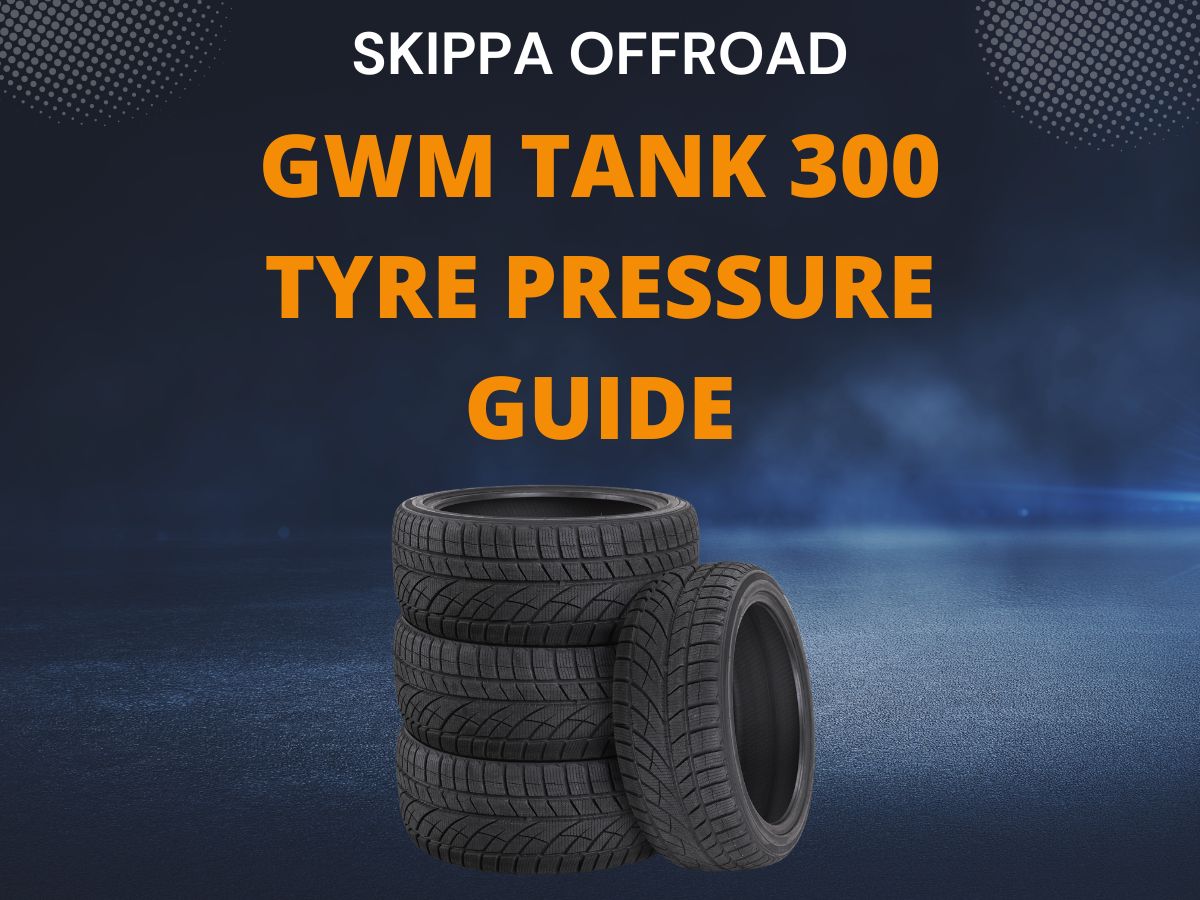First published: April 8, 2023
Last updated: April 8, 2023
Welcome to the ultimate tyre pressure guide for the popular GWM Tank 300!
If you’re wanting to know the best-recommended tyre pressures for highway, sand, mud, snow, dirt and even towing, then you’re in the right place!
Let’s begin…
GWM Tank 300 Recommended Tyre Pressures
With stock tyres, these are the recommended tyre pressures for the recently released GWM Tank 300:
| Highway Driving | 36 to 38 PSI |
| Sand Driving (Winter) | 20 to 22 PSI |
| Sand Driving (Summer) | 18 to 20 PSI |
| Mud Driving | 17 to 20 PSI |
| Snow Driving | 30 to 35 PSI |
| Dirt Driving | 30 to 35 PSI |
| Highway Towing | 38 to 42PSI |
Variations in Temperature
You may have noticed different tyre pressures stated for sand driving in summer and winter.
Generally speaking, you’ll lose one PSI for every 10 degrees drop in Fahrenheit temperature, while the opposite is true as the temperature rises. Do keep this in mind if you’re driving in areas that have large variations in daily temperature.
In some places, a tyre pressure reading first thing in the morning can be 5 to 7 PSI different in the late afternoon.
The rule of thumb is to air down lower than usual on very hot days which allows the tyres which allow for some buffer. In colder temperatures, plan to pump your tyres 2-3 PSI higher than usual, except for when there’s snow on the road.
Additionally, many 4×4 owners will slightly increase their tyre pressures (particularly in the rear) while towing a heavy trailer, boat or caravan. This is to compensate for the additional weight.
Off Road Pressure Tips
I’ve lowered and increased my tyre pressures many times! Here are my best tips…
1. Check Your Side Wall
Your sidewall may or may not have recommended tyre pressures, or if they do, it’s typically a wide range. However, your owner’s manual typically provides the exact pressures for your model and variation.
2. Adjust On The Fly
Don’t be afraid to adjust your pressures regularly as your journey unfolds. Yes, it’s inconvenient, but it’s far less expensive than a new tyre or even a tow truck!
3. Low Pressures = Vulnerable Tyres
An offroad track may have a rocky outcrop, followed by a long sandy section. In this case, excessively low tyre pressures could see a sharp rock or stick slice your sidewall open, rendering your tyre unrepairable.
4. Confirm With Your Owner’s Manual
And as mentioned, confirm the above numbers with your owner’s manual or local tyre shop. Skippa Offroad does not take responsibility for tyre damage caused.

